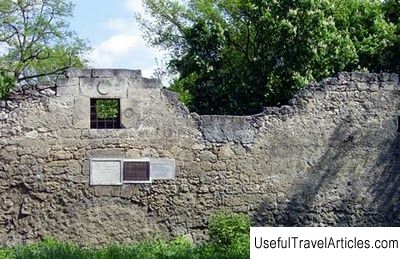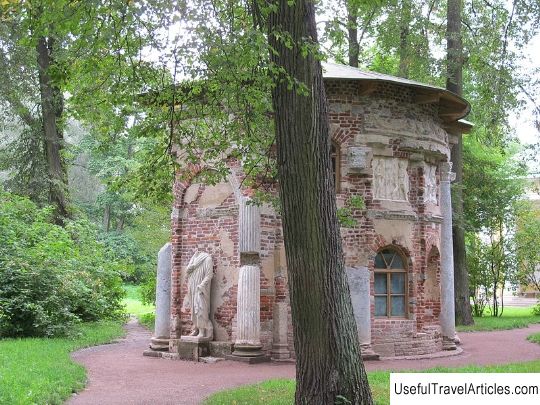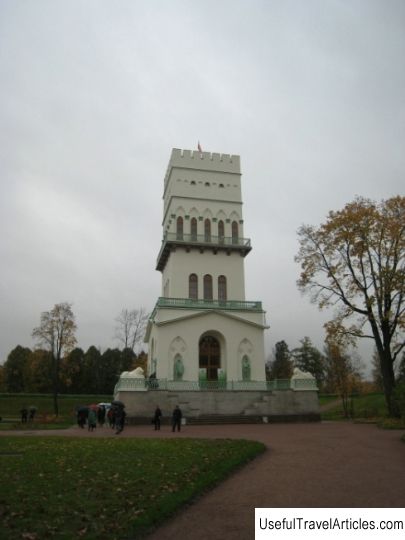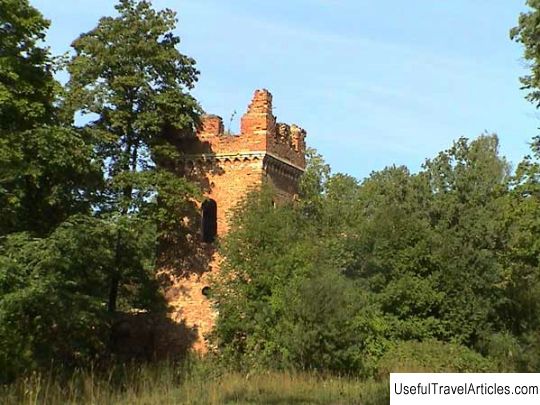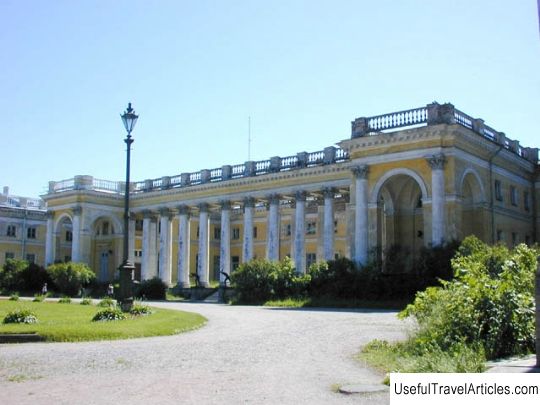Tower-ruin description and photo - Russia - St. Petersburg: Pushkin (Tsarskoe Selo)
Rating: 9,6/10 (7895 votes) 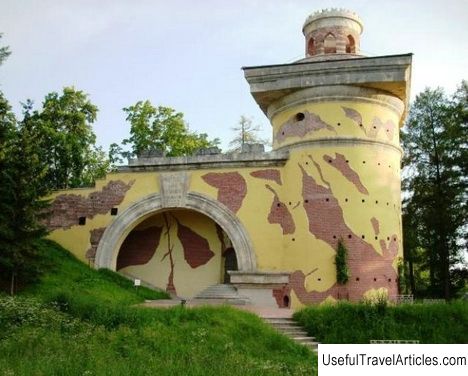
Tower ruin description and photos - Russia - St. Petersburg: Pushkin (Tsarskoe Selo). Detailed information about the attraction. Description, photos and a map showing the nearest significant objects. Photo and descriptionThe ruin tower occupies an important place in the complex of monuments in honor of the Russian-Turkish war in the Catherine Park. It was one of the first to be built in 1771 according to the project of the architect Felten. The tower is a symbol of the fall of the Ottoman Port during the Russian-Turkish war in 1762, which ended with the signing of the Kuchuk-Kainardzhi peace in 1768. This Ruin Tower is a symbol of the ruins buried underground - an allegory of Great Greece under the rule of the Ottoman Empire. Construction work was carried out by the architect I.M. Sitnikov. The ruin tower is a huge Tuscan column, sunk into the ground, which is completed by a wide square platform. The stone tower is crowned with a round belvedere-pavilion, which is installed above a flat ceiling and is made of slab stone. The belvedere is created like a dilapidated turret with Gothic lancet through openings. In 1773 the artist A. Belsky and his assistants painted alfresco walls of the Tower-ruins from the outside. Cracks were specially carved on the plastered wall, which imitated the natural defects of the masonry, due to which the walls and tower resembled ruins, which were of particular interest in the second half of the 18th century. The tower consists of external and internal pillars. It is adjoined by partially open, partially hidden in the embankment of an earthen mountain, which runs from the Pig-Iron Gate. The wall facing the park is cut through by a semicircular arch, the archivolt of which is made of blocks of Pudost stone. The arch is a kind of entrance to the corridor. On its right side there is a helical ramp, which serves to to go up to the upper platform. There is an observation deck on the tower, at a height of 21 m from the base, from where a beautiful view of the landscape park opens. The ruin tower served as a viewing platform, the fortress wall with an earthen embankment and an entrance arch was used for recreational skiing and walks. In the 18th century. The ruin tower has become the most popular structure in Tsarskoye Selo parks, so beloved by many artists. The “half-ruined” structure gave it a special flavor and naturalness. During its existence, the Ruin Tower has been restored only twice. The first restoration was carried out in the 1880s. The work was not thorough, therefore, over the next century, the monument decayed greatly. In the late 90s. 20th century The ruin tower is once again in the spotlight in terms of restoration, but serious restoration work was started only in 2004-2005. The ruin tower was included in the list of long-term construction due to the lack of sufficient funding for restoration work. The restoration of the tower was completed in 2006. Its main goal was to repair the damage caused to the building by time and war, while preserving the original color of the “ruins”. In terms of architecture, size, scale, technical condition, the Ruin Tower was a rather problematic object. Its restoration could not be postponed for long. The contractor started the restoration practically from scratch. First, the foundation was restored using the practice of archaeological excavations and the exposure of the historical massif of the base of the Tower. After that, drainage works were carried out, the drainage system has been recreated. Rebuilding the walls had to be extremely careful, as it was necessary to take into account the compatibility of new building materials with historical ones and to take into account the strong saturation of the walls with moisture. All this was done. Work was carried out to improve the park area adjacent to the building, the restoration of the stairs and dam bridges, which were destroyed during the war years. As a result, they were returned to their original appearance according to archival documents from the 18th century. The alleys were decorated with new stone benches.         We also recommend reading The Art Box description and photos - Belize: Belmopan Topic: Tower-ruin description and photo - Russia - St. Petersburg: Pushkin (Tsarskoe Selo). |
